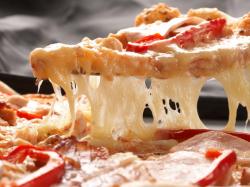Nielsen Perishables Group: Deli Pizza & Frozen Pizza: Allies, Not Competitors
August 23, 2013 | 2 min to read

Now in a recovering economy, deli pizza sales are still on the rise while sales of frozen pizza continue to decline. Not all types of deli pizza are growing, however. Shrinking household sizes are impacting growth of small sizes in deli pizza. Whole pizzas account for over 50% of deli pizza sales, but whole pizza sales declined 4% over the past three years. Deli pizza slices and calzones/stromboli – both suitable options as dinner for one – gained sales during the same time. Moreover, deli pizza sales index high across all household sizes – from start-up families to senior singles and couples – whereas frozen pizza sales index high almost exclusively across families with children in the home.
Part of deli pizza’s appeal is the impression of purchasing a hot, freshly-prepared meal, but consumers are taking this a step further. The fastest-growing deli pizza sub-category during the past three years was pizza components, including doughs and toppings. This growth reflects consumer interest in preparing meals, even if it just means adding toppings. Retailers are fueling this trend by carrying more pizza components. Growth in the number of unique component items that sold over the past three years far exceeded any other deli pizza sub-category.
Most pizza buyers have a discernible preference for deli or frozen pizza, as only 18% of pizza buyers purchase both deli pizza and frozen pizza in a given year. While the two departments are not competing for the same buyers, they are meeting the same buyer needs. When we look at the top items in a grocery shopping basket with deli pizza, it becomes clear that these buyers value time-saving options including shelf-stable prepared foods, frozen snacks and prepared seafood. The same time-saving theme is apparent in the basket with frozen pizza, but is exemplified through different items such as frozen dinners, frozen breakfasts and packaged macaroni and cheese.
To read the rest of the story, please go to: Nielsen Perishables Group
